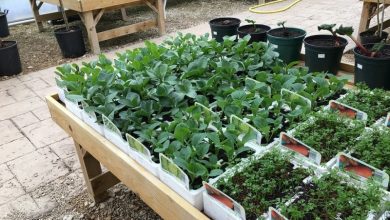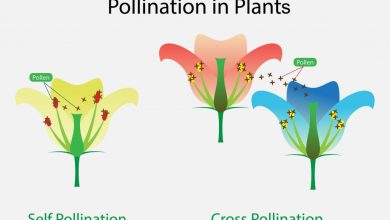Aeroponic cultivation: What it is, how it works, advantages and disadvantages

This article is dedicated to aeroponic cultivation. We will explain what aeroponic cultivation is, how it works and what its advantages and disadvantages are. Aeroponics comes from air, but how can you grow a plant with air?

Sometimes, on the internet we can find sites where the virtues of this type of cultivation are exaggerated and its problems or drawbacks are hidden, with the sole purpose of selling a course or a certain system.
1. What is aeroponic cultivation?
In a type of system in which the culture medium is air. It is a soilless cultivation system, in which the plants receive water and nutrients through an aqueous solution that is nebulized in the air forming a dew or fine mist, made up of tiny droplets. This spray reaches the roots of the plants, providing them with the water and nutrients they need.

It is a farming system different from hydroponics (hydroponic crops) and aquaponics (farming with fish).
2. How does it work?
The plants are placed on a structure that supports them, leaving the aerial part visible, so that it receives light, and on the other hand the roots are placed, which remain hanging in a closed environment. The structure can be vertical (cultivation tower), inclined or horizontal.


On the side where the roots are, there is no substrate, neither natural such as peat nor artificial such as rock wool. What there is is a hollow space where a series of nebulizers are located that generate that fine mist loaded with droplets of the aqueous solution. In this way, the aqueous solution, which contains water and nutrients, reaches the roots directly without passing through any substrate. That is, in aeroponics the roots are hanging in the air, where they are periodically sprayed by foggers.
In order for this aqueous solution to be nebulized, it must reach the nebulizers with a certain pressure. To give it pressure, a pump is used, which sucks the aqueous solution from a tank or reservoir, and drives it through pipes to the nebulizers.
In addition to the structure, the nebulizers and the tank, we need other equipment to dose the nutrients in the water and to program the irrigations. Filters are also very important, since the holes of the nebulizers are very small and must be prevented from becoming clogged.
3. Types of aeroponic systems
Aeroponic systems are usually classified according to their working pressure in low pressure and high pressure aeroponic systems.
3.1. low pressure aeroponics
Low pressure systems, which rely on a simple fountain pump to spray water through misters, are cheap and suitable for building home growing systems. Their limitation is that low pressure foggers are capable of producing only a light mist, like a small sprinkler, not a true mist.
3.2. high pressure aeroponics
To achieve true misting, meaning that moisture floats in the air and more effectively delivers nutrients to the roots, you need higher water pressure than a normal pump can provide. For this reason, professional aeroponic systems are based on a high-pressure pressurized water tank, together with high-quality nebulizers capable of providing the greatest amount of mist possible.
3.3. Aeroponics with ultrasonic nebulization
This type of aeroponic system uses an ultrasonic nebulizer that allows it to generate very small droplets.
When ultrasound waves are applied to the solution, these droplets are generated, which are propelled until they reach the roots.
4. The advantages and disadvantages
4.1. Advantages of aeroponics
Scientific studies have shown that plants grow faster in aeroponic crops than in soil or hydroponic crops, because more oxygen reaches the roots.
Aeroponic systems are also extremely efficient when it comes to water consumption. These closed-loop systems use 95% less irrigation than soil-grown plants. The nutrients remain in the aqueous solution, which is recirculated through the system.
In addition to these efficiencies, the ecological reputation of aeroponics is reinforced by its ability to grow food in small spaces, since it allows very good use of space. That is why this method is used in installations such as « plant factories », which are appearing in cities. Producing vegetables in these industrial buildings reduces the environmental costs of transporting food from the countryside to the city.
The «plant factories» are indoor cultivation buildings, in which intensive vertical cultivation systems with artificial lighting are used.

Another advantage of aeroponic systems is that they are totally enclosed, so there is no nutrient runoff that can contaminate nearby waterways.
4.2. Disadvantages of aeroponic systems
It is probably the most expensive form of cultivation per square meter, because it is the one that requires the greatest investment in terms of equipment. The cheapest is still outdoor cultivation in natural soil.
Aeroponic systems are more complex and delicate to manage. The concentration of nutrients in the water must be kept within precise parameters. A slight malfunction of the equipment can lead to the complete loss of the crop.
There is also a major downside, from an environmental standpoint, that aeroponic systems rely on electrical power to pump water through the tiny misting devices. And while they can be used in the natural light of a greenhouse, they are often used with power-hungry grow lights.
5. How much does an aeroponic system cost?
The small models, to grow at home, can cost around 100 Euros. The most professional systems, of larger dimensions, start at approximately €1,000.
Both the cheapest and the most expensive systems are usually sold as complete kits that include all the fundamental elements that this type of installation requires: support structure, tank, pump, programmer, pipes and nebulizers.
6. What can be grown with an aeroponic system?
In theory, anything. In practice, aeroponic systems are mainly used to grow leafy vegetables such as lettuce, escarole, endive or spinach, aromatic herbs such as basil, chives, or mint), and also strawberries, tomatoes and cucumbers. These species are also suitable for hydroponic cultivation.
A peculiarity of aeroponic crops, unlike hydroponics, is that they adapt well to growing root vegetables such as potatoes.

Other horticultural crops are possible, but have more complex nutrient needs, making them difficult to grow.
Growing shrubs or fruit trees must be ruled out due to their larger size. Commercial aeroponic systems are not designed to support crops of this size.
Bibliography
- Gopinath, P., Vethamoni, P.I., & Gomathi, M. (2017). Aeroponics soilless cultivation system for vegetable crops.Chem. Sci. Rev. Lett, 6 (22), 838-849.
- Lakhiar, IA, Gao, J., Syed, TN, Chandio, FA, & Buttar, N.A. (2018). Modern plant cultivation technologies in agriculture under controlled environment: A review on aeroponics.Journal of plant interactions, 13 (1), 338-352.
- Prieto Salazar, SS (2021). Aeroponics: cultivation without soil.+Science, (27), 26–27. Retrieved from https://revistas.anahuac.mx/masciencia/article/view/938




